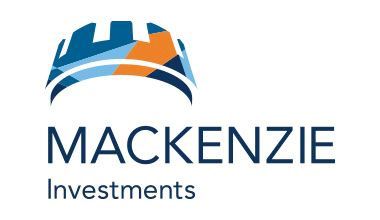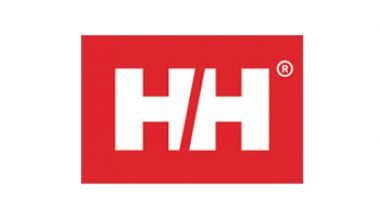Learn to Train
LEARN THE SPORT
In the Learn to Train stage, young ski racers enjoy being more independent and physically active. They are more involved with friends and seek to spend more time participating in various activities with their peers.
Development of the fundamental movement skills through participation in complementary sports promotes the development and consolidation of fundamental movement and skiing skills. Young ski racers should play complementary sports or engage in structured physical activity two to three days per week beyond time spent skiing.
- Boys 9 -12
- Girls 8 - 11
- Club Level
- Local & Zone racing
- Limited provincial racing
- Stage ends with start of adolescent growth period
- Growth and Development
- Physical Literacy
- Cardiorespiratory
- Strength & Conditioning
- Movement Preparation
- Physical Training for Para-Alpine
Growth and Development
This stage is one of the most critical periods of skill development for young ski racers. In this stage, they are developmentally ready to acquire the general and sport-specific skills that are the cornerstone of athletic development. From age 8 in girls and age 9 in boys, to the onset of the growth spurt young ski racers can begin training according to more formalized methods.
The nervous system is well developed, and young ski racers are now capable of performing refined technical skills. The learn to train stage of development ends with the onset of puberty and the rapid growth that accompanies this significant life event.
Avoid placing too much stress on the body to reduce possible compression injuries from the shock the body must absorb during the stepping and hopping segments of the jump, i.e., triple jump or box jump.
Females require proper instruction and training in the correct ways to execute lower-body and shoulder movements. The appropriate technique to prevent anterior cruciate ligament and patellofemoral joint injury can be introduced to athletes and reinforced by coaches (Harber, 2007).
PHYSICAL LITERACY
Fundamental movement skills are critical in the development of a ski racer as they provide the foundation on which to participate in complementary sports and ski racing. Previous research demonstrates that without the development of the fundamental movement skills, many children and youth choose to drop out of sports participation.
Skiers consolidate their fundamental movement skills during this stage. Proper development of the fundamental movement skills allows the ski racers to excel in ski racing and the various complementary sports that support the development of their athletic abilities throughout their skiing career.
OUR SKI RACERS NEED TO BE PHYSICALLY FIT AND LITERATE IN A BROAD RANGE OF SPORTING ENVIRONMENTS. THE RESPONSIBILITY FOR DEVELOPING A PHYSICALLY FIT AND LITERATE SKIER ULTIMATELY RESTS WITH PARENTS AND GUARDIANS IN PARTNERSHIP WITH THEIR COACHES AND LOCAL SKI CLUB.
FUNDAMENTAL MOVEMENT SKILL CATEGORIES:
Stability Skills - the ability to sense a shift in one's body that cause one to be off balance and the ability to adjust rapidly and accurately to maintain stability with the appropriate compensation movement. Examples include balancing, twisting, dodging, pushing, pulling, and turning.
Locomotor Skills - movements that are responsible for transporting the body from one place to another. Examples include walking, running, jumping, sliding, and skipping.
Manipulative Skills - movements that are responsible for either sending away, receiving, or travelling with an object such as a ball, or a puck.
PHYSICAL LITERACY RESOURCES:
Physical Literacy Concept Paper Ages 0-12 Years
Learn more at http://physicalliteracy.ca
Download the Physical Literacy Consensus Statement
Watch the Sport for Life video: What is Physical Literacy?
Learn to teach the fundamental movement skills with one of the Coaching Association of Canada's Fundamental Movement Skills Workshops for Parents and Coaches.
Cardiorespiratory
During this stage, the cardiovascular system continues to develop, and tolerance to lactic acid accumulation gradually improves.
Continue to develop aerobic endurance through unstructured play and participation in complementary sports. A solid endurance base enables young ski racers to more efficiently cope with the demands of training and competition in the later stages of development.
Introduce athletes to moderate anaerobic training; this will help them to adapt to high-intensity anaerobic training in the later stages of specialization. Anaerobic bouts or sprinting should be less than 80m.
Young ski racers can develop running technique through the use of running drill work and short sprint.
STRENGTH AND CONDITIONING CONSIDERATIONS
In the Learn to Train stage, the habit of exercising on a regular basis should be formed through regular participation in a structured conditioning program two days per week in addition to playing complementary sports and unstructured play. Ski clubs are encouraged to create a summer conditioning day camp to foster team bonding and culture.
Physical activity should include the use of resistance bands, medicine balls, small kettlebells or dumbells, physio (swiss) balls, and their body weight in fun and creative environments. Activities performed with free weights, bands, medicine balls can strengthen the whole body and improve coordination.
Core and balance exercises promote the development of dynamic balance, challenge young ski racers with simple balance drills to assist in the development of their ability to re-centre their body requiring the interaction of the more significant and smaller muscle groups. Balance training should be emphasized in the physical fitness program at this stage.
Strength training guidelines for this stage include the use of a combination of 8 to 12 different exercises that enhance muscular strength as well as fundamental movement skills including agility, balance, coordination and power. Gradually introduce more precise and coordinated movement patterns that require the interaction of smaller muscle groups.
To avoid injury, females require proper instruction and training in the correct ways to execute lower-body and shoulder movements. The appropriate technique to prevent anterior cruciate ligament and patellofemoral joint injury can be introduced to athletes and reinforced by coaches (Harber, 2007).
Note: The Learn to Train stage can be very diverse regarding maturation so some more mature females may be able to follow the Train to Train physical fitness guidelines.
Introductory strength building exercises should include the necessary movement patterns performed with correct technique:
- Squatting movement including the introduction of body weight double leg squat progressing to single leg squat progressively increasing the range of motion.
- Hinge movement at the hip by touching the toes with fingers or hands in both a sitting and standing position.
- Lunging movement, starting with simple forward lunges onto one leg progressing to stepping back into a lunge followed by learning to lunge laterally; progress to lunge jumps with proper technique.
- Pushing actions by learning how to push up properly, push against the wall and floor, push a med ball away from the body and overhead, push against the ground and jump into the air. Push off the snow and ice using a skating motion.
- Pulling actions by pulling yourself up and performing a chin up or pull up, pull an object toward the body, play tug of war, learn to row.
- Carrying movements by carrying items from one place to another with the weight close the body, progressing to moving the weight on one side or the other progressing towards carrying weight further away from the body to cause the body to be out of balance.
Strength and muscle coordination will improve rapidly through participation in complementary sports that promote the development of physical literacy. Strength gains are mostly a result of nervous system development and muscular growth.
Due to normal growth and development, body tissues are susceptible to injury. Ligaments and connective tissues are becoming stronger, but the bone ends are still in the process of calcifying or hardening. Select a suitable number of repetitions to match individual skier needs and encourage young ski racers to complete a proper movement preparation warm up and perform all exercises and activities with appropriate technique.
MOVEMENT PREPARATION
Participate in movement preparation sessions before starting any training activity.
Proper movement preparation:
- Warms up the mind and the body by priming it for physical activities.
- Promotes the development of athleticism, resulting in better ski racers.
- Enables young skiers to strengthen their bodies through increased participation in physical activity.
- Allows young ski racers to adequately prepare the body for movement and improve the way they move which reduces the risk of injury while skiing and participating in unfamiliar activities.
- Promotes a feeling of success by acquiring skills resulting in confidence and increased motivation to overcome challenges because they are developing physical literacy.
Movement Prep Resources:
Sport for Life Physical Literacy Movement Prep Guide Ages 9 & 10
Sport for Life Physical Literacy Movement Prep Guide Ages 11 & 12
Physical Literacy Movement Prep Interactive PDF (video)
Performance Core Progressions for Movement Prep Interactive PDF (video)
Physical Training for Para-Alpine
Much like the development of a long term plan for skiing, the same must be looked at for the physical aspect of a participant or athlete. For the Para-Athlete we must make certain considerations based on the physical impairment of the individual. It is necessary to realize that due to the nature of differences between each athlete’s needs, every aspect of the program will be considered on an individual basis. Training does not differ from an able-bodied regimen, however extra considerations should be taken into account for each category.
VISUALLY IMPAIRED
Goals: develop proprioceptive awareness and balance to increase confidence in spatial moving, if possible, increase chemistry and communication with a guide.
Considerations:
- Not usually any physical restrictions, no modifications on testing procedures.
- Need to educate and progress through bodyweight movements to movements with external objects and object manipulation.
- Landing and jumping progressions can help to build spatial awareness, which can increase balance and coordination.
- Outdoor conditioning workouts will most often require a guide with experience.
SITTING
Goals: Develop and improve sitting positioning, balance, core strength, scapular, rotator cuff and potentially hip stabilizers.
Considerations:
SAFETY: GAIN AWARENESS OF THEIR ASIA (AMERICAN SPINAL INJURY ASSOCIATION) STATUS AND LESION LEVEL. GAIN A CLEAR UNDERSTANDING OF THEIR CURRENT FUNCTION (BOTH SENSATION AND MOTOR) PRIOR TO STARTING A PROGRAM.
- Orthostatic hypertension: gradually change positions.
- Autonomic dysreflexia (T6 and above): ensure they have used the washroom prior to their workouts and there are no bladder infections, restrictive clothes or other potentially noxious stimuli present.
- Respiratory function: do they need an assisted cough.
- Caution with overtraining as this will affect their ability to carry out activities of daily living.
- May need more help than normal with the movement of themselves and equipment around the weight room or training area
- Be aware of areas without feeling and rubbing, pressure points during certain movements.
STANDING
Goals: Address muscular imbalances that may occur. Engage and encourage proper movement patterns, but understand that they may not be perfect.
SAFETY: IF WORKING WITH AN AMPUTEE, ENSURE THAT SKIN CARE IS MANAGED, PARTICULARLY IF TRAINING IN A HOT ENVIRONMENT.
- Understand the differences in the range of motion, strength and optimal positioning with each athlete.
- All of the facets of training (strength, power, agility, etc.) can be trained, however, they all may look different between athletes and possibly within an athlete (i.e. left and right sides).
- Some athletes (eg. Cerebral Palsy or stroke) may need different movements for each side of their body, don’t neglect the less functioning side.


